Review: Gustav v. Gustav – Hasegawa vs. Tamiya 1/72 Bf 109G-6
The Bf109g series was the most produced variant of the Bf109 fighter. It has been a popular subject in scale modeling. Scalemates lists 256 kits--126 in 1:72 scale--starting with a 1959 Airfix kit. I thought it would be interesting do a comparison build that pits the longstanding premier Gustav by Hasagawa from 1994 against what is thought now to be the leading kit by Tamiya from 2019. I built the two kits side-by-side to see what a 20+ year difference in modeling technology makes. I built them OOB with exception of adding Luftwaffe seat belts by Eduard.
As expected the Tamiya instructions are full bodied and detailed, broken down into 16 steps. The Hasagawa instructions are clear and minimalist with all assembly depicted on one side of a small sheet.
A big difference between the kits is the canopy. Hasagawa's are 1-piece while the Tamiya kit (left) breaks it down into 3 parts to allow an open canopy. Which is in line with Tamiya's wealth of cockpit detail.
The Hasagawa kit has a nice simple cockpit representative of its vintage. The Tamiya kit (left), in contrast, has more detail and parts and is complimented by side wall details on the fuselage interior. This is comparable to some 1/48 scale kits.
Not surprisingly this characteristic is also reflected in the landing gear. The wheel well is detailed out on the Tamiya kit (top). Not only that, but the landing struts on the Tamiya kit are L shaped with tabs that fit into slots in the lower wing piece that provides as solid connection and ensures the proper strut/wheel cant of the 109. The gear cover doors are also nicely detailed.
The Tamiya propeller assembly (left) is more detailed as well. However, that detail is all but invisible unless the spinner is left off.
Initial painting (Hasagawa on top).
The finished results highlight some of the Tamiya kit's advantages.
Hasagawa
Tamiya
The Tamiya kit details two other features of the Gustav that the Hasagawa kit doesn't; the engine cover hinge and the fuselage center line slot.
Conclusion. Both kits build up into good representations of a unique and historic aircraft. The Hasagawa kit (right) shows its age though. It required more effort during assembly (putty and sanding), particularly with the placement and puttying of the MG blisters. There was more room for error. For example it offers only vague guidance about the location of the blisters and there is plenty of room for error with the landing gear. The Tamiya kit has many well engineered parts (as noted with the landing gear) to make assembly much easier and to ensure accuracy. Only a tiny bit of putty was needed. Currently both kits are available for about the same price: $21.60 for the Tamiya at Scalehobbiest compared to $19.99 for the Hasagawa kit on ebay. However, I wouldn't pass up the Hasagawa kit if you can get it at a deep discount.
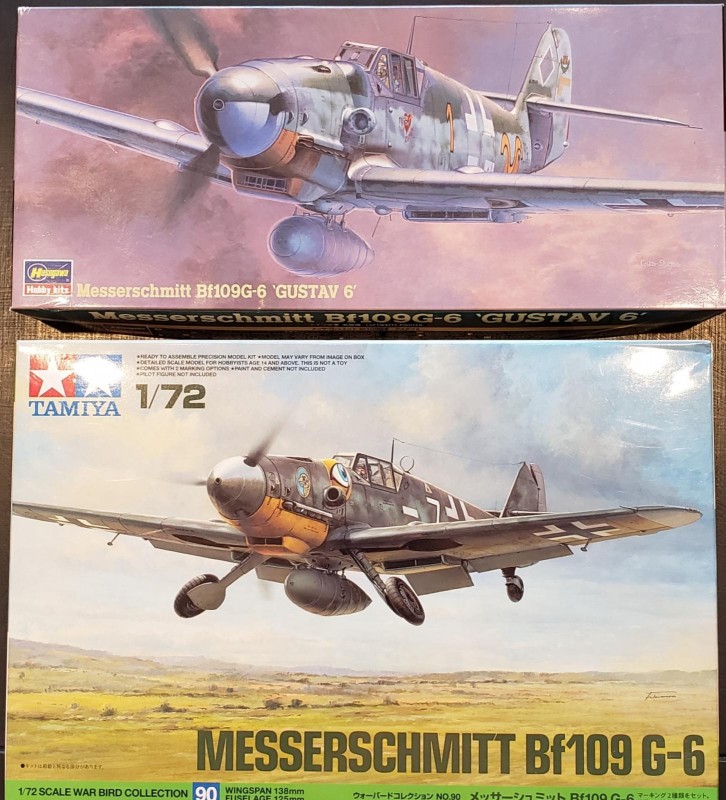
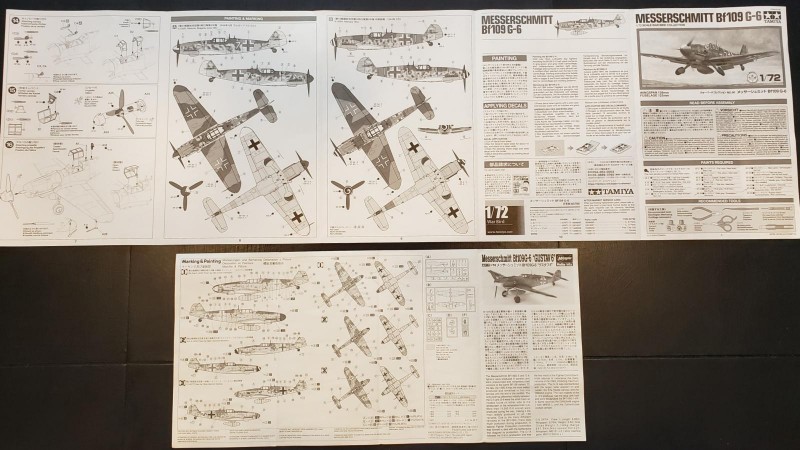


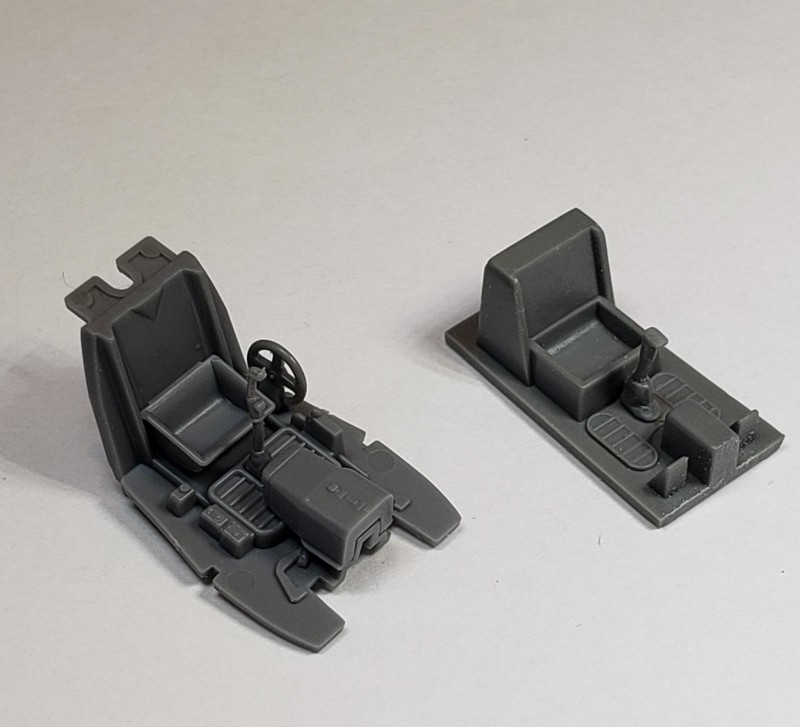



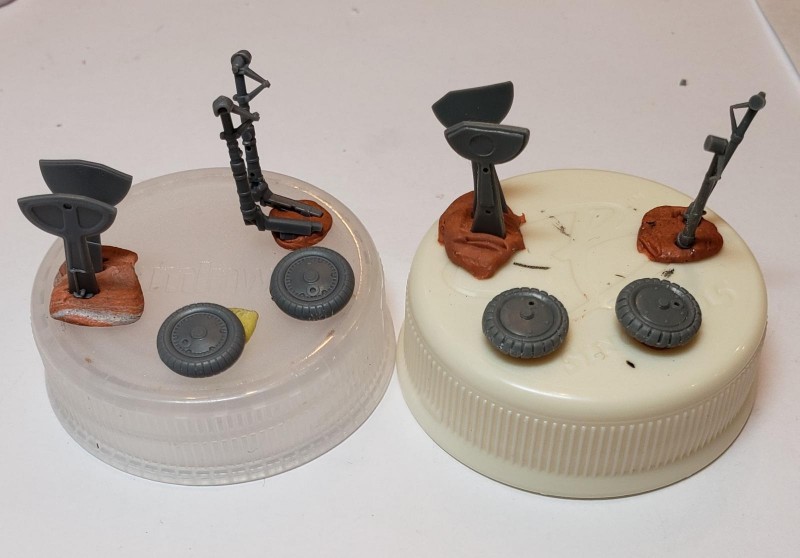






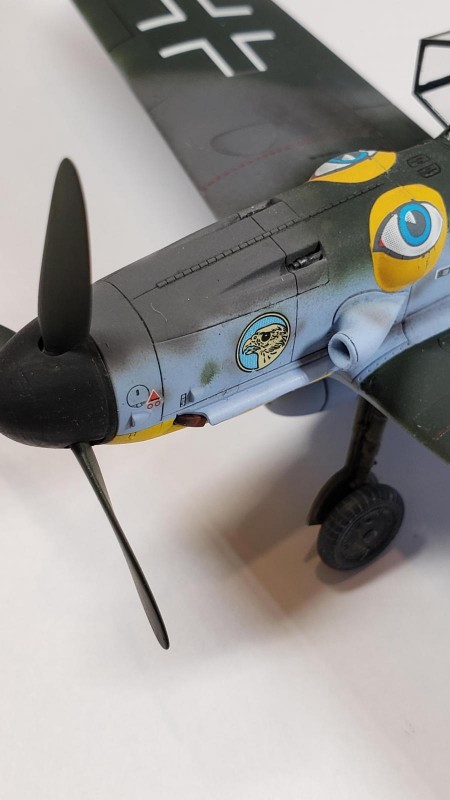







Great comparative article, Dennis! Great job on the models too!
Excellent builds, Dennis!
Thanks for the detailed article!
Thank you Spiros. And thanks for your guidance on incorporating photos into articles.
Thanks for this excellent comparison build, Dennis @dmeyers
Both kits build up into real nice models.
Beautifully done.
Both came out great, Nice comparison.
Excellent builds on both kits and great comparison, thanks!
Marvelous comparison, Dennis. Either kit delivered a fantastic result, as you have shown.
Impressive builds on both kits.
Great post, Dennis, 109s always make great models, these two are good examples, definitely liked.
Excellent comparison @dmeyers, you convinced me!
🙂 ... Greetings ... 🙂 :
Nice and attractive work on those two models Dennis.
Two nice Gustav's, and one nice comparison article - well done! I've built the Tamiya kit but yet to do the Hasegawa, though I have a couple of them in my 109 project stash.